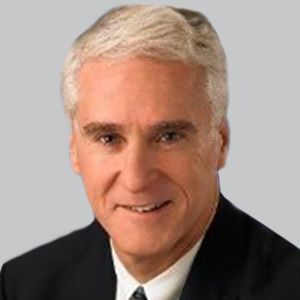Article
FDA Accepts NDA for Pitolisant for Excessive Daytime Sleepiness, Cataplexy in Narcolepsy
Author(s):
If approved, pitolisant would be the first new therapy in more than 15 years indicated for treatment of both excessive daytime sleepiness and cataplexy in adults with narcolepsy.
Jeffrey M. Dayno, MD, chief medical officer at Harmony

Jeffrey Dayno, MD
Harmony Biosciences announced that the filing of the new drug application for pitolisant, a therapy under investigation for the treatment of excessive daytime sleepiness and/or cataplexy in adults with narcolepsy, has been accepted and granted priority review by the FDA.
The new drug application submission is backed by data from the clinical development program in narcolepsy which included more than 300 patients, as well as safety data on more than 1500 patients across multiple patient populations. If pitolisant becomes FDA approved, this would represent the first new therapy in the United States in more than a decade for the treatment of both excessive daytime sleepiness and cataplexy in adults with narcolepsy.
“Pitolisant offers a novel approach to the treatment of both EDS and cataplexy in patients with narcolepsy, for which there have been no new treatment options in over 15 years,” Jeffrey M. Dayno, MD, chief medical officer at Harmony, said in a statement.1 “We look forward to working with the FDA during its review of the pitolisant NDA, with our hope of being able to offer this new treatment option to help address an important unmet medical need for people living with narcolepsy.”
Long-term data from the Harmony III phase 3 open-label trial showed that pitolisant decreased the Epworth Sleepiness Scale (ESS) score from 16.8 to 13.4 after 1 year, with continued improvement over the 5-year trial with an ESS score of 10.6 at the end of the trial.2
Of the 77 participants in the trial at the French sites invited to participate in the extension period up to 5 years, with follow-up visits every 6 months, 50 participants (65%) completed the first 12-month period, 48 participants opted to participate in the extension period. In total, 32 participants (67%) stayed on pitolisant for 5 years or until study end. Most participants (80%—88%) were maintained on 40-mg pitolisant once daily during the trial.
The investigational therapy showed that multiple symptoms of REM dysregulation were reduced from baseline to year 1: cataplexy 76%, hypnagogic hallucinations 54%, and sleep paralysis reduced by 62%—limited data from patient diaries were available at year 5.
The safety and tolerability profile was consistent with that reported in the randomized controlled trials. Common adverse effects included headache, insomnia, weight increase, anxiety, depression, and GI disturbances—16% of participants discontinued treatment because of adverse effects. There was no evidence of the development of tolerance with long-term use and no reports of symptoms related to withdrawal when participants discontinued treatment.
When speaking with NeurologyLive, Michael Thorpy, MBChB, the director of the Sleep-Wake Disorders Center at Montefiore Medical Center, said that treating sleepiness is very difficult since there’s always a drive for sleepiness that’s there, and the majority of medicines in this space are intended to help people remain awake. Thorpy said how there’s a need for better and more effective medications, which has opened the door for potential treatments like pitolisant.
Pitolisant is the first of the histamine H3 receptor-antagonist/inverse agonist class, which works by enhancing the histaminergic neurons in the brain. In 2016 the therapy received approval by the European Medicines Agency. Previously, the FDA granted pitolisant orphan designation for treatment of narcolepsy, breakthrough therapy for treatment of cataplexy in narcolepsy and fast track designation for treatment of excessive daytime sleepiness and cataplexy in narcolepsy. Harmony hopes to obtain FDA approval to market the therapy in the United States this year.
The therapy is currently accessible to adults in the United States with excessive daytime sleepiness associated with narcolepsy, with or without cataplexy as a symptom, as part of the Pitolisant Expanded Access Clinical Evaluation (PEACE) program.
REFERENCE
1.Harmony Biosciences Announces File Acceptance Of Its New Drug Application For Pitolisant [news release]. Plymouth Meeting, Pa.: Harmony Biosciences; Feb. 12, 2019.
https://www.harmonybiosciences.com/newsroom/harmony-biosciences-announces-file-acceptance-of-its-new-drug-application. Accessed Feb. 13, 2019.
2. Harmony Biosciences Presents 5-Year Data on Pitolisant at International Narcolepsy Symposium [news release]. Plymouth Meeting, Pa.: Harmony Biosciences; Sept. 11, 2018. http://www.bioprojet.com/en/article/hiii-5-years/. Accessed Feb. 13, 2019.




